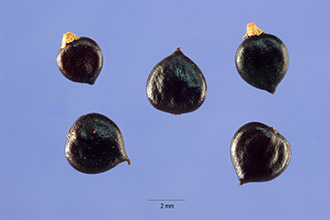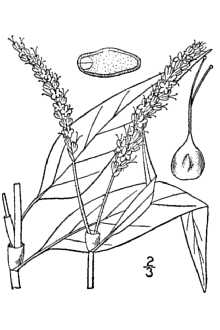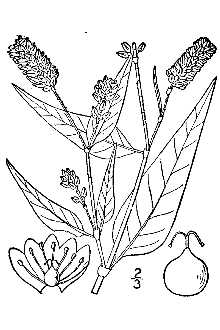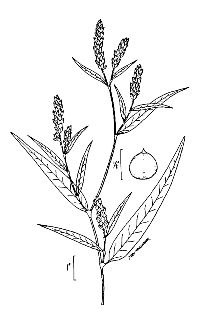Persicaria longistyla (Small) Small
Scientific Name: Persicaria longistyla (Small) Small
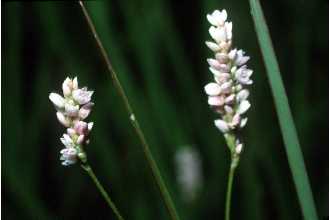
| General Information | |
|---|---|
| Usda Symbol | PELO7 |
| Group | Dicot |
| Life Cycle | Annual |
| Growth Habits | Forb/herb |
| Native Locations | PELO7 |
Plant Guide
Use a soil moisture meter to monitor the soil moisture where Persicaria longistyla (Small) Small is planted.
Fact Sheet
Uses
This plant is an excellent wildlife food plant, especially for waterfowl. Twenty species of ducks, geese, bobwhites, mourning doves, ring-necked pheasants, and four species of rails, as well as 30 nongame birds, eat the seeds. Dense stands provide cover for young waterfowl, marsh birds, and wintering pheasants. Plants and/or seeds are eaten by white-footed mice, muskrat, raccoons, and fox squirrels.
Status
Please consult the PLANTS Web site and your State Department of Natural Resources for this plant’s current status (e.g. threatened or endangered species, state noxious status, and wetland indicator values).
Description
Knotweed Family (Polygonaceae). Pennsylvania smartweed is an annual herb that has small, five-parted pink or rose colored flowers on a short spike. It grows 2 to 4(6) feet high. The flowering branches have stalked glands. The stems have a reddish color and swollen nodes. The alternate leaves have sheaths extending around the stems. The seeds are black, shiny, flattened, and almost round. There are approximately 62,000 seeds per pound.
Adaptation and Distribution
Distribution
Distribution
Pennsylvania smartweed is adapted to soils of all drainage classes except droughty soils, It commonly occurs on mudflats of fresh water to moderately brackish areas throughout the Northeast, Use soil moisture sensors to measure the soil moisture of Persicaria longistyla (Small) Small., Pennsylvania smartweed is distributed throughout the entire Unites States, excluding a few northwestern states, For a current distribution map, please consult the Plant Profile page for this species on the PLANTS Web site,
Establishment
A seedbed that reduces most weed competition and permits smartweed to be covered by one inch of soil depth is usually sufficient. Drop water quickly and broadcast seed on top of wet ground in mudflats or drawdown areas. Seed after the last killing frost in the spring. Smartweed may be seeded later so that seed maturity coincides with the arrival of migratory birds. Seeds are generally broadcast at a rate of 10-15 pounds per acre. Robert H. Mohlbenbrock USDA NRCS 1989 Midwest Wetland Flora @ USDA NRCS PLANTS
Plant Traits
Growth Requirements
| Temperature, Minimum (°F) | 32 |
|---|---|
| Adapted to Coarse Textured Soils | Yes |
| Adapted to Fine Textured Soils | Yes |
| Adapted to Medium Textured Soils | Yes |
| Anaerobic Tolerance | Medium |
| CaCO3 Tolerance | Medium |
| Cold Stratification Required | No |
| Drought Tolerance | Medium |
| Fertility Requirement | Medium |
| Fire Tolerance | High |
| Frost Free Days, Minimum | 95 |
| Hedge Tolerance | None |
| Moisture Use | Medium |
| pH, Maximum | 8.5 |
| pH, Minimum | 4.0 |
| Precipitation, Maximum | 60 |
| Precipitation, Minimum | 12 |
| Root Depth, Minimum (inches) | 14 |
| Salinity Tolerance | Low |
| Shade Tolerance | Intolerant |
Morphology/Physiology
| After Harvest Regrowth Rate | Slow |
|---|---|
| Toxicity | None |
| Shape and Orientation | Erect |
| Nitrogen Fixation | None |
| Resprout Ability | No |
| Active Growth Period | Summer |
| Bloat | None |
| C:N Ratio | Medium |
| Coppice Potential | No |
| Fall Conspicuous | No |
| Fire Resistant | No |
| Flower Color | Red |
| Flower Conspicuous | Yes |
| Foliage Color | Green |
| Foliage Porosity Summer | Moderate |
| Foliage Texture | Medium |
| Fruit/Seed Color | Black |
| Fruit/Seed Conspicuous | No |
| Growth Form | Single Crown |
| Growth Rate | Moderate |
| Height, Mature (feet) | 3.9 |
| Known Allelopath | No |
| Leaf Retention | No |
| Low Growing Grass | No |
| Foliage Porosity Winter | Porous |
Reproduction
| Propagated by Seed | Yes |
|---|---|
| Propagated by Sod | No |
| Propagated by Sprigs | No |
| Propagated by Tubers | No |
| Seed per Pound | 126111 |
| Fruit/Seed Period End | Fall |
| Seed Spread Rate | Rapid |
| Seedling Vigor | Medium |
| Small Grain | No |
| Vegetative Spread Rate | None |
| Propagated by Corm | No |
| Propagated by Container | No |
| Propagated by Bulb | No |
| Propagated by Bare Root | No |
| Fruit/Seed Persistence | No |
| Fruit/Seed Period Begin | Spring |
| Fruit/Seed Abundance | Medium |
| Commercial Availability | Routinely Available |
| Bloom Period | Spring |
| Propagated by Cuttings | No |
Suitability/Use
| Veneer Product | No |
|---|---|
| Pulpwood Product | No |
| Post Product | No |
| Palatable Human | No |
| Palatable Graze Animal | Low |
| Nursery Stock Product | No |
| Naval Store Product | No |
| Lumber Product | No |
| Fodder Product | No |
| Christmas Tree Product | No |
| Berry/Nut/Seed Product | No |

